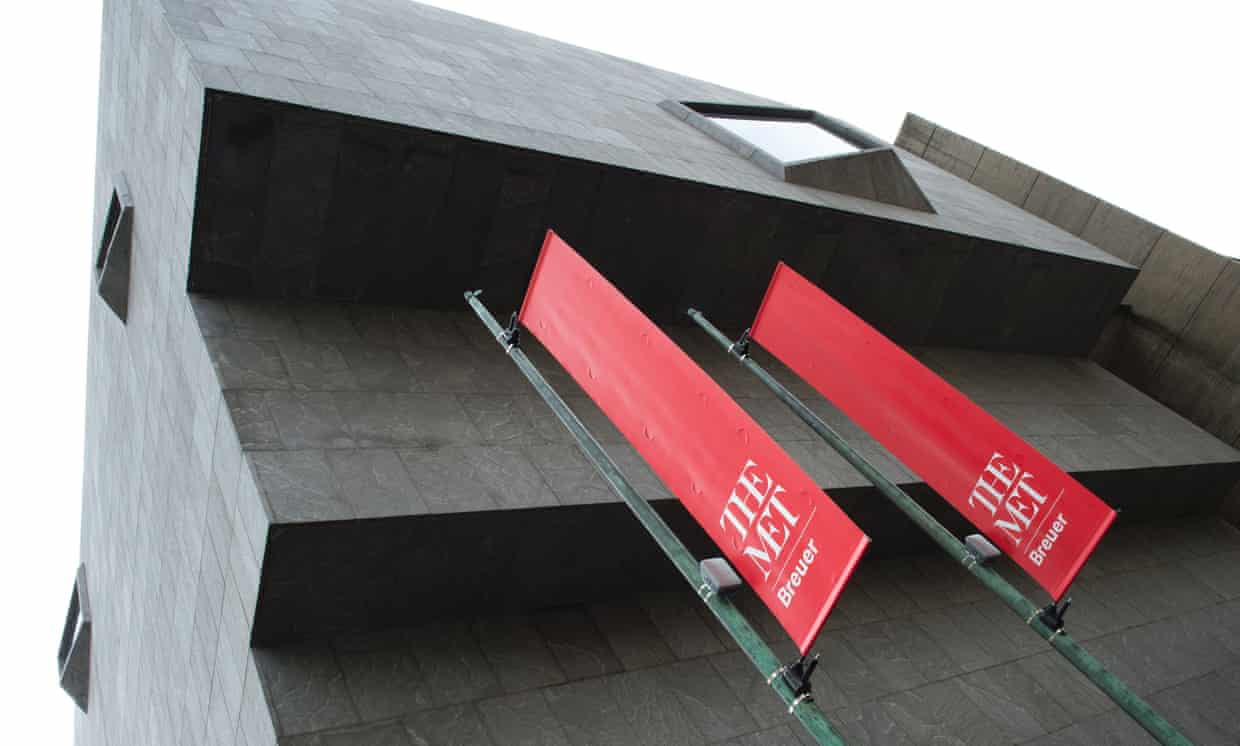In The Guardian, Jason Farago reports on the Met’s new museum for modern and contemporary art, the Met Breuer, which is housed in the lightly renovated former home of the Whitney on the Upper East Side of Manhattan, and which opens to the public on March 18. Farago writes that the museum’s inaugural exhibition is, at best, hit or miss:
If the Met Breuer devotes itself to programming like the Mohamedi retrospective, it will be a valuable addition to the American museum landscape, though hardly a second Met. Forthcoming solo projects from the painter Kerry James Marshall and the musician Vijay Iyer also sound promising. But the principal exhibition at the Met Breuer, the one really meant to make the case for the museum’s expansion, is Unfinished: Thoughts Left Visible, which considers incomplete, fragmentary, or rough-hewn artworks over two floors and 500 years of western art history.
This is a far shakier affair. It features extraordinary loans of both older and newer art, plus prizes from the Met’s collection (such as El Greco’s all-out Vision of Saint John) that look fresh in the new Breuer digs. Yet its argument is soft, at times dilettantish, and its reason for being unclear.
It opens with a killer wall of 16th-century Italian painting – including Titian’s late, landmark Flaying of Marsyas, on rare loan from the Czech Republic, whose hazy detailing and blended edges make the composition appear caught between draft and final copy. (The painting is signed; signatures and frames play an important role in this show.) An aesthetic of non finito, favoring spontaneity and coarseness over glossy surfaces and heavily worked detail, took root in the later stretches of the Renaissance, and completed works by Velázquez, Rembrandt and others testify to a new elevation of the creative process above the final product. At around the same time, fragmentary and incomplete artworks became worthy of consideration in their own right. Some became legendary for being unfinished, among them the greatest coup of this show: Jacques-Louis David’s rarely seen Death of Bara, painted at the height of the Terror, in which a nude teenage revolutionary expires in a field of white squiggles …
But as Unfinished moves upstairs, and into the 20th century, it judders violently; the two halves of the show have almost nothing to link them. A suite of Cézannes and Picassos – the younger artist saw the elder’s 1907 memorial exhibition at the Salon d’Automne, which included numerous unfinished works – overplays the importance of the works’ incompletion; you start hunting for white space when you should be paying attention to the birth of cubism. From there, we get a dispiriting hit parade of the 20th century, under an umbrella so broad that almost any artwork could fit. A single small gallery features Piet Mondrian, Barnett Newman, Jasper Johns, Brice Marden, Bruce Nauman, Eva Hesse and Robert Ryman – great artists all, but known quantities. Unfinished, in this second half, stretches its theme so far, to include infinity, entropy, and audience participation (cue the inevitable pile of candies, signed Félix González-Torres) that the historical frame snaps completely.
